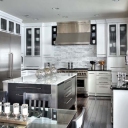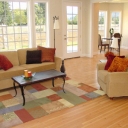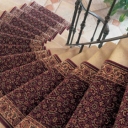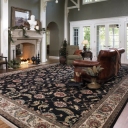Commodes and Cisterns are rarely thought about before buying. Have you ever spent time wondering what kind of a commode or cistern would be best for you toilet? Maybe never, however, it is an essential requirement. A commode should be chosen in respect to the space provided in the toilet, and where it would be located.
Two kinds of toilets
A toilet is a plumbing fixture and disposal system intended for the disposal of bodily wastes. There are two kinds of toilet-
Dry toilet: needs no plumbing for water input or evacuation, but is often coupled with some ventilation system.
Wet toilet; more widely used and is the producer of ‘black water’.
Types of toilets
The most common and widely used toilet in modern cities is the flush toilet, in which water takes away the waste through sewers to a waste treatment plant. In rural areas where sewers are not practical, septic tanks maybe installed in place the flush toilets. The most popular toilet or commode design in western countries is the sitting toilet. However, some places in Europe and Asia also use squat toilets.
Different Cisterns
Low level Cistern- they connect directly to the rear of the pan via a short flush pipe. It is mostly made of the same material as the pan and also has the same color. Inlet and overflow pipes can be fitted to either side o f the cistern, the position depends on existing service points and space requirements.
High level Cistern- often found in old styled bathrooms or Victorian styled toilets. These are normally mounted on shelf brackets; it uses gravity to carry water to the pan via a long flush pipe. However these are not popularly used now days.
Close Coupled Cistern- these are bolted directly to the pan forming one single integrated unit. An internal standpipe is connected to the overflow connection to allow any water to overflow directly into the pan itself.
Space saving Cisterns- A corner or compact cistern is used in a small space. A corner cistern fits into the corner, and a compact cistern consists of a plastic unit which is usually 4-5 inches from front to back
Concealed cisterns- consist of a low level cistern hidden behind paneling, the layout is rather aesthetical and the flush is mounted into the face of the paneling rather than using a flush lever.
Tips for hygiene:-
- one should flush the commode after use, and never leave a commode dirty
- commodes should be regularly cleaned as to remove germs and infections
- Hands must be washed after using the commode and after touching the flush as it helps to keep personal hygiene.
- The toilet should be properly ventilated and sunrays should be allowed to enter as it helps kill microscopic organisms.
- Foul odor should not persist; the toilet should have fresheners.






















